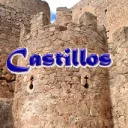CULLERA (II) Subida al Santuario, Santuario Nuestra Señora de la Encarnación, Castillo, Museo Arqueológico, Cueva del Pirata Dragut, Playas, Faro, y Jardín Botánico.
 Localidad próxima a Valencia o para los que están veraneando en las proximidades, donde la oferta cultural, gastronómica y playa se combinan perfectamente.
Localidad próxima a Valencia o para los que están veraneando en las proximidades, donde la oferta cultural, gastronómica y playa se combinan perfectamente.
Encontraras las siguientes visitas:
- Subida al Castillo y Santuario por el Camino del Calvario, que asciende hasta los 200m de altura serpenteando la montaña.
- Castillo de Cullera. Tiene su origen en el S. X época del Califato. Tras la conquista de Valencia le fue entregado en el Año 1239 al Rey Jaime I de Aragón. En los siglos sucesivos ha tenido distintas modificaciones, se compone el castillo con cinco torres con los dos recintos fortificados.
- Dentro del Castillo se encuentra el Museo Arqueológico. Para recorrer la historia local y de la comarca desde la prehistoria.
- Junto al Castillo, El Santuario de la Virgen de la Encarnación. Donde se encuentra la patrona local en este templo del S. XIX neo-bizantino con tres naves, y con una talla de la Virgen del S. XIV en mármol.
- Cueva del pirata Dragut.- Este, ataco Cullera el 25 de mayo de 1550, llevándose un importante botín. Con un recorrido con diferentes salas que se encuentran en distintas alturas donde los objetos mostrados te acercan a los episodios de los piratas en esta zona.
- Faro de Cullera.– Este faro se inauguro en el año 1858. Este y otro más son lo que quedan en la provincia de Valencia.
- Playas.- Además de las playas que hemos recorrido hasta el faro y las que hay en la parte frente a la población junto a lo largo de toda la Avenida de Alicante llamada Playa de San Antonio, y de la Avenida de Castellón con la playa del Racó. Ahora tras el faro se encuentran nuevas playas en la zona norte, con la playa del Dosel y la playa naturalista de San Lorenzo.
- Y el Jardín Botánico.– Lugar que es un remanso de vegetación con unos 25.000m2. Podrás disfrutar y más con los hijos, de más de 2.500 especies vegetales: palmeras, cactus, frutales, cicadáceas, etc.
Puedes descargarte el PDF con información, planos, fotos y contactos.
Pulsar sobre la imagen con el botón derecho y guardar como…para descargar y llevar el archivo PDF en tu tablet o smartphone.
-
CULLERA (II) Ascent to the Sanctuary, Our Lady of the Incarnation Sanctuary, Castle, Archaeological Museum, Dragut Pirate Cave, Beaches, Lighthouse, and Botanical Garden.
Locality near Valencia or for those who are vacationing nearby, where the cultural, gastronomic and beach offer are perfectly combined.
You will find the following visits:
- Ascent to the Castle and Sanctuary by the Way of the Calvary, that ascends until the 200m of height winding the mountain.
- Cullera Castle. It has its origin in the S. X time of the Caliphate. After the conquest of Valencia it was delivered in the year 1239 to King Jaime I of Aragon. In the following centuries it has had different modifications, the castle is composed with five towers with the two fortified precincts.
- Inside the Castle is the Archaeological Museum. To explore the local and regional history from prehistory.
- Next to the Castle, The Sanctuary of the Virgin of the Incarnation. Where is the local patron in this temple of the 19th century neo-Byzantine with three naves, and with a size of the Virgin of the S. XIV in marble.
- Dragut Pirate Cave.- This, Cullera attacked on May 25, 1550, taking an important booty. With a tour with different rooms that are in different heights where the objects shown bring you closer to the episodes of pirates in this area.
- Cullera Lighthouse.- This lighthouse was inaugurated in 1858. This and another are what remain in the province of Valencia.
- Beaches.- In addition to the beaches we have traveled to the lighthouse and those in the front of the town along the entire Avenida de Alicante called Playa de San Antonio, and Avenida de Castellón with the beach of Racó. Now behind the lighthouse are new beaches in the north, with the Dosel beach and the naturalistic beach of San Lorenzo.
- And the Botanical Garden.- Place that is a haven of vegetation with about 25,000m2. You can enjoy and more with the children, more than 2,500 plant species: palm trees, cacti, fruit trees, cicadas, etc.
You can download the PDF with information, plans, photos and contacts.
Click on the image with the right button and save as … to download and bring the PDF file to your tablet or smartphone.
-
CULLERA (II) Ascension vers le sanctuaire, le sanctuaire de Notre-Dame de l’Incarnation, le château, le musée archéologique, la grotte Dragut Pirate, les plages, le phare et le jardin botanique.
Localité près de Valence ou pour ceux qui sont en vacances à proximité, où l’offre culturelle, gastronomique et la plage sont parfaitement combinées.
Vous trouverez les visites suivantes:
- Ascension vers le Château et le Sanctuaire par le Chemin du Calvaire, qui monte jusqu’à 200 mètres d’altitude.
- Château de Cullera. Il a son origine dans le temps S. X du califat. Après la conquête de Valence, il fut livré en 1239 au roi Jaime I d’Aragon. Au cours des siècles suivants, il a eu différentes modifications, le château est composé de cinq tours avec les deux enceintes fortifiées.
- À l’intérieur du château se trouve le musée archéologique. Explorer l’histoire locale et régionale de la préhistoire.
- À côté du château, le sanctuaire de la Vierge de l’Incarnation. Où est le patron local dans ce temple du 19ème siècle néo-byzantin à trois nefs, et avec une taille de la Vierge de S. XIV en marbre.
- Dragut Pirate Cave.- Cullera a attaqué le 25 mai 1550 en prenant un important butin. Avec une tournée avec différentes salles qui sont à différentes hauteurs où les objets présentés vous rapprochent des épisodes de pirates dans cette région.
- Phare de Cullera: ce phare a été inauguré en 1858. Ceci et un autre sont ce qui reste dans la province de Valence.
- Plages.- En plus des plages, nous avons visité le phare et celles situées à l’avant de la ville tout au long de l’Avenida de Alicante, appelée Playa de San Antonio, et de l’Avenida de Castellón avec la plage. de Racó. Derrière le phare se trouvent de nouvelles plages au nord, avec la plage Dosel et la plage naturaliste de San Lorenzo.
- Et le jardin botanique.- Lieu qui est un havre de verdure avec environ 25 000 m2. Vous pourrez profiter et plus avec les enfants, de plus de 2500 espèces de plantes: palmiers, cactus, arbres fruitiers, cigales, etc.
Vous pouvez télécharger le PDF avec des informations, des plans, des photos et des contacts.
Cliquez sur l’image avec le bouton droit et enregistrez sous … pour télécharger et importer le fichier PDF sur votre tablette ou votre smartphone.
-
CULLERA (II) Aufstieg zum Heiligtum, dem Heiligtum der Muttergottes der Menschwerdung, der Burg, dem Archäologischen Museum, der Piratenhöhle Dragut, den Stränden, dem Leuchtturm und dem Botanischen Garten.
Ort in der Nähe von Valencia oder für diejenigen, die in der Nähe Urlaub machen, wo das kulturelle, gastronomische und Strandangebot perfekt kombiniert werden.
Sie werden die folgenden Besuche finden:
- Aufstieg zur Burg und zum Heiligtum auf dem Weg des Kalvarienbergs, der bis zu 200 m hoch ist und den Berg windet.
- Cullera Schloss. Es hat seinen Ursprung in der X-Zeit des Kalifats. Nach der Eroberung von Valencia wurde es im Jahr 1239 an König Jaime I. von Aragon ausgeliefert. In den folgenden Jahrhunderten gab es verschiedene Umbauten, die Burg besteht aus fünf Türmen mit den beiden befestigten Bezirken.
- Im Inneren des Schlosses befindet sich das Archäologische Museum. Um die lokale und regionale Geschichte aus der Vorgeschichte zu erkunden.
- Neben der Burg das Heiligtum der Jungfrau der Menschwerdung. Wo ist der örtliche Schutzpatron in diesem Tempel aus dem 19. Jahrhundert neobyzantinisch mit drei Schiffen und einer Größe der Jungfrau von S. XIV in Marmor.
- Dragut-Piratenhöhle. Diesbezüglich griff Cullera am 25. Mai 1550 an und nahm sich eine wichtige Beute. Mit einem Rundgang durch verschiedene Räume in verschiedenen Höhen, in denen die gezeigten Objekte Sie näher an die Episoden der Piraten in dieser Gegend heranführen.
- Leuchtturm von Cullera. – Dieser Leuchtturm wurde 1858 eingeweiht. Dies und ein weiterer Leuchtturm verbleibt in der Provinz Valencia.
- Strände.- Zusätzlich zu den Stränden sind wir zum Leuchtturm und zu den Stränden vor der Stadt entlang der gesamten Avenida de Alicante (Playa de San Antonio) und der Avenida de Castellón mit dem Strand gereist von Racó. Jetzt sind hinter dem Leuchtturm neue Strände im Norden, mit dem Dosel-Strand und dem naturalistischen Strand von San Lorenzo.
- Und der Botanische Garten. – Ein Ort voller Vegetation mit ca. 25.000 m². Mit den Kindern können Sie mehr als 2.500 Pflanzenarten genießen: Palmen, Kakteen, Obstbäume, Zikaden usw.
Sie können das PDF mit Informationen, Plänen, Fotos und Kontakten herunterladen.
Klicken Sie mit der rechten Maustaste auf das Bild und speichern unter …, um die PDF-Datei herunterzuladen und auf Ihr Tablet oder Smartphone zu bringen.

 castillode.wordpress.com
castillode.wordpress.com museode.wordpress.com
museode.wordpress.com